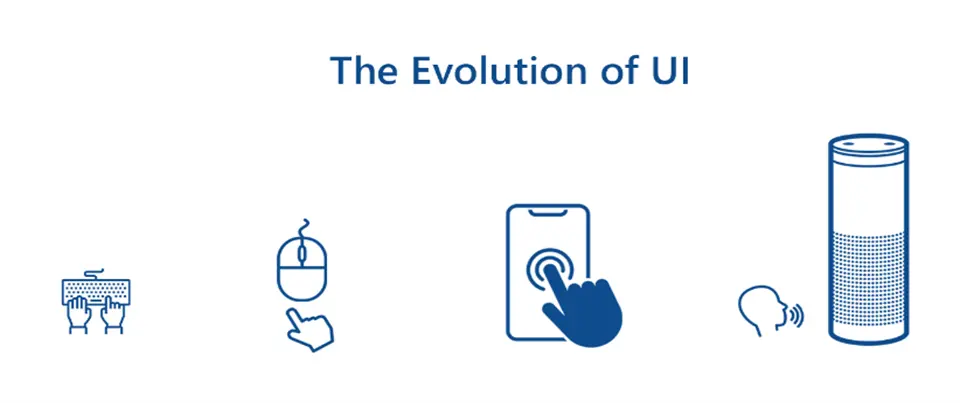
Conversational User Experience Design (CxD) has recently emerged as a significant topic of debate in the IT world. To follow the footsteps of Alexa, Google Assistant, and Siri, developers and designers are experimenting with various types of conversational systems. It’s important to understand that conversation design is more than just simply writing down text in a conversational manner. Conversation design is, in fact, a combination of several disciplines including copywriting, UX design, interaction design, visual design, motion design, and if applicable voice and audio design.

If you step back and walk through from history to the present, you will see that UI design is heading in a clear direction, towards natural forms of interactivity. Looking back, we can see that keyboards and mouse were the innovations designed to bridge the gap between spoken language and interaction with computing devices. Now we are on the edge of a more natural interface that involves our fingers, voices, and gesture-based UI.
What is Conversational UX?
Conversational UX refers to how a user feels when interacting with a machine that learns from what the user says. As the user and the bot exchange messages, the bot learns what you want and adapts until it eventually delivers what you’re looking for. Adding to that, Conversational UX is to achieve natural interactions between humans and technology (computers or bots). Direct interactions with AI personalities (Alexa, Google Assistant, Siri, and so on), voice-enabled apps, and numerous other robotics are also part of it.

How Conversational UX can help you?
You will observe the following advantages if you focus on conversational user experience design when designing an interface.
- Reduced customer support cost: While conversing with the bot, users may find the solution to their problem. So, users won’t have to contact a support executive this way.
- Time reduction: Bots can provide automated responses in a matter of seconds. This significantly improves conversion rates.
- Increased user retention and engagement: Users will be more likely to stay and interact with a bot that performs well and solve problems.
- Digital services accessibility: In some cases, a conversation is far more efficient and effective than taping or clicking a button. For example, we can set an alarm by just simply saying, “Set an alarm for 7 a.m.” instead of setting manually”.
- Increment of trust: If users are able to get things done in a few clicks, then that might help in developing user trust and also can improve their perception of the company.
Best Practices
- Define Audience: It’s essential for you to define the potential users in the beginning itself whom your bot will interact with. Then you should start with a few User Persona(s) considering the following parameters like age, gender, language & culture, profession, hobbies & geography. You must conduct thorough research at this point to avoid making large modifications later once your bot is up and running.
- Dialogue Flow Outline: After defining user persona(s) you need to have a user flow that should cover all the main solutions to users’ pain points and all the vital information they might be looking for. This outline will serve as your bot’s framework. A practical functional version of what is to be said.
- Script Writing: A chatbot should be clear & concise, to give much information in a very few sentences, in the easiest way possible. Allow users to openly ask for more information if they have too much to say.
- Define Chatbots Technology: Most of the chatbot development tools are based on two types of chatbots: AI-based (AI chatbots) or linguistic (rule-based chatbots) models. Artificial Intelligence-based Chatbot leverage Natural Language Processing (NLP) and machine learning to communicate with users. They can exist as graphic interfaces or voice assistants (Alexa, Google Assistant, Siri, etc.). Linguistic Based Chatbot sometimes referred to as ‘rules-based, does not require AI to function properly but rather relies on if/then logic to create conversational flows.
Elevate Customer Experience with Conversational UX Design
By leveraging Conversational UX Design, you can create back-and-forth conversations that are more engaging, informative, and meaningful to the user’s entire experience. And by incorporating their conversational style into your designs, you can reach a larger audience. Post covid there is a behavioral shift in users, everyone cautious about touch interfaces and prefer voice interactions, voice assistants use has accelerated. Many digital interactions are becoming conversational. Think about searches on Google, users prefer using voice search rather than typing, almost 70% of requests to the Voice Assistants (Alexa, Google Assistant, Siri, etc.) are expressed in natural language. Consider increasing your investment in Conversational UX Design to join the conversation shift that is already underway.


